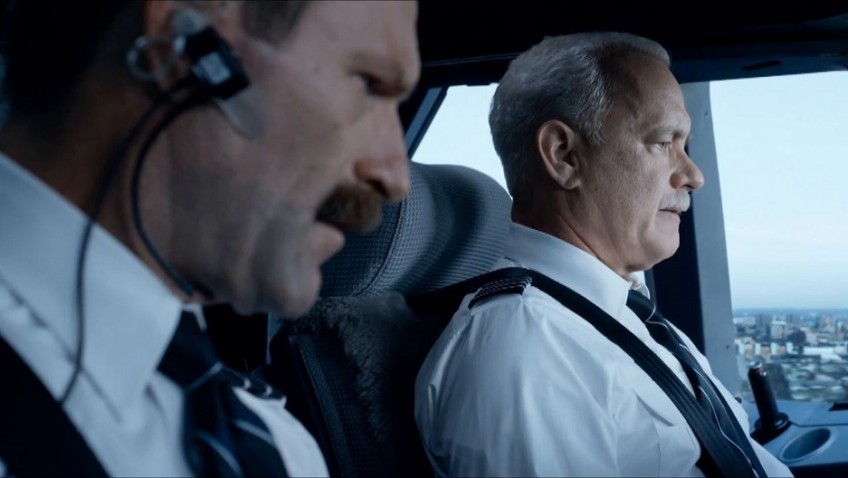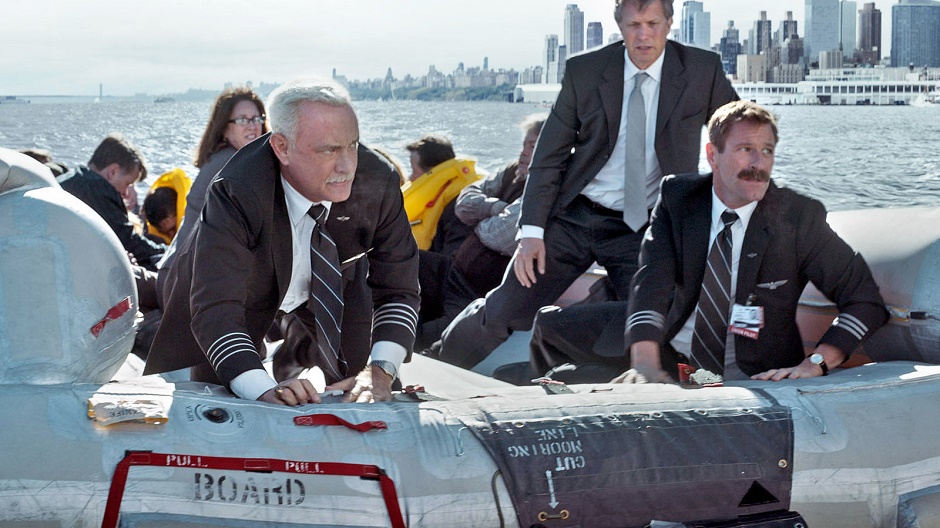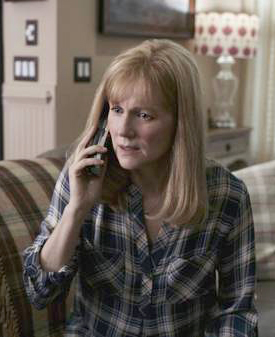Joyce Glasser reviews Sully (December 2, 2016) Cert 12, 96 min.
It is hard to think of a job that is more physically, mentally and intellectually demanding than film directing. In addition to surviving on little sleep and being on high alert for 12 hour shifts, you must be an artist, a craftsman, a diplomat, a problem solver, a negotiator and a manager of a huge staff, all involved in different tasks.
Even a 65 year old would be exhausted by the relentless pressure, but try telling that to 86-year-old Clint Eastwood and you’d make his day. Eastwood’s latest film, Sully
, marks his most successful opening film yet in the USA and Eastwood has directed 35 films. It has so far grossed $189 million on a budget of $60 million – his highest budget yet, as well. Sully
is not a great film, and far from Eastwood’s best, but seldom has his skill as a director been so challenged.
On 15 January 2009, Captain Chesley ‘Sully’ Sullenberger, (Tom Hanks) becomes a national hero in the USA after making an unprecedented decision to land his US Airways Airbus A320 in the Hudson River. Birdstrike during take-off disables both engines. Sully and his new co-pilot Jeffrey Skiles (Aaron Eckhart, also appearing in this week’s Bleed for This) do not feel they had the time to make it over the buildings to the nearest airport, although they were deemed to be at a ‘safe distance.’ Despite the freezing January weather, all 155 people on board survived, with only five suffering serious injuries.
Sully attributes their survival to the rescue teams, but for the passengers, Sully is their hero. The appeal of his story, based on Sullenberger’s (with writer Jeffrey Zaslow) book Highest Duty: My Search for What Really Matters, is not only that everybody likes to imagine a person just doing his job becoming a hero. It’s also that you or I could have been on that plane.
But how do you tell a suspense story when, seven years ago the whole world read all about it? Eastwood gets some help from scriptwriter Todd Komarnicki, whose only other major writing credit is Perfect Stranger, arguably the worst film of 2007.
While the filmmakers take it for granted that everyone knows the crash part of the story, they also know that we expect to experience it vicariously in the film. Eastwood & Co cleverly give us two bites at the cherry and neither claims to be the ‘real thing’. The film opens with a nail-biting scene in the air and I won’t ruin the fun. Sully, whose years of training and experience had never prepared him for such a moment, seems headed into a high density strip of NYC. Then a white-haired, moustached man in his late 50s wakes up in his hotel room, shaken.
This isn’t a cop out, it’s a clever technique for drawing us into story. It also serves to highlight that while Sully is only human and is suffering from PTSD. As he quietly suffers, he finds himself becoming a national hero, appearing to rapturous applause on talk shows. His wife (Laura Linney) who learns of the emergency landing by turning on the television, tells him that reporters are camped out on their door step.
There’s only so much mileage a director can get from this scenario, particularly when Sullenberger, at least as portrayed by Hanks, is such a dull, inexpressive man with so little to do in the film (a lot of the time we watch him go jogging).
In fairness, Hanks had the pressure of not only portraying a national hero but one who was apparently an active participant in the production process. Whatever the problem, in terms of being a charismatic, vulnerable and hence, interesting, character, Captain Sullenberger could not be further from Captain Philips.
So the film shifts focus from the giddy heights of an ordinary pilot-turned-celebrity to the tension generated by the narrow-minded, suspicious National Transportation Safety Board (NTSB). As we discover, Sully supplements his income with revenue from a private consulting company where he advises on safety issues. Both jobs are at stake! Though it’s a bit early for a well-paid pilot and consultant to be worrying about paying the bills, Mrs Sullenberger is panicking. Unless someone in the family has a gambling habit or an incurable, uninsurable illness, this suggests how desperate the filmmakers were for an ‘obstacle’ and a second act to the film.
Help for the filmmakers comes in the ACARS (Aircraft Communications Addressing and Reporting System) report that indicates that the left engine was still operative. In addition, the board of inquiry ran flight simulations showing the pilot could have landed the plane safely at either Teterboro or by returning to LaGuardia. Can Sully prove this is hogwash? The tension mounts.
Or does it? The NTSB routinely investigates all accidents and emergency landings as a matter of protocol and passengers have to be grateful they do. Eastwood claims that the NTSB was “railroading” Sullenberger and “was trying to paint the picture that he had done the wrong thing.” But according to an online commentary, Sullenberger objected to mentioning the investigators by name because it was not fair to associate them with changes in the story depicting “more of a prosecutorial process.” The NTSB itself was never consulted about its portrayal or perspective.
All of this could be dismissed as dramatic license in the interest of a good story were it not for a feeling that it is the viewer who has been railroaded – for our own entertainment. Still, it’s quite a strain to imagine the NTSB sacking a national hero with an unblemished 40-year-record whose quick and conservative thinking saved the lives of all his passengers and many potential victims on the ground.
You can watch the film trailer here:







